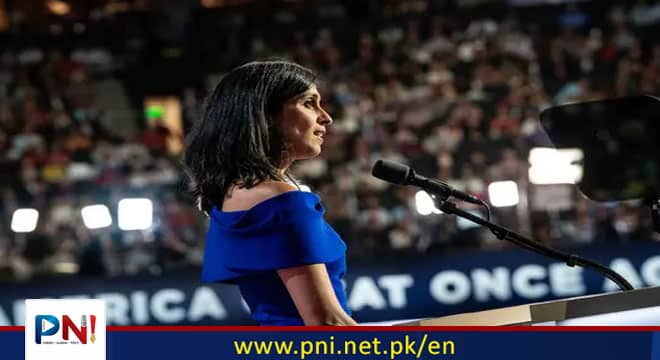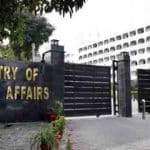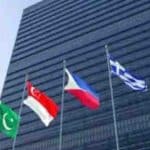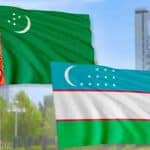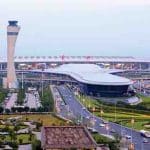NEW YORK, Jul 21 (APP): Indian-Americans have now emerged as the largest and most politically active group among-Asian Americans, with recent milestones, including the possibility of Vice President Kamal Harris becoming Democratic presidential candidate in case President Joe Biden drops his re-election bid amid growing doubts about his ability to serve a 4-year term, according to US media reports.
In the other scenario, if former President Donald Trump wins the November election, his running mate JD Vance’s wife Usha Chilukuri Vance, who is also of Indian origin, will become the second lady.
A front-page dispatch in The New York Times Saturday noted, “When Senator JD Vance became Donald J. Trump’s running mate this week on the Republican presidential ticket, it also marked the first time that an Indian-American and practicing Hindu, Usha Vance, stood to become a vice-presidential spouse.
“That cemented a remarkable reality: at the current moment, a woman of Indian descent (Kamala Harris) will either serve another term in the White House or be the second lady.”
In 2021, Kamala Harris became the first person of Indian descent, as well as the first woman and Black person, to be vice president. The 2024 presidential cycle is the first one to have featured two Indian-American candidates in Nikki Haley, an Indian Sikh who was a former US Ambassador to the UN, and Vivek Ramaswamy, a successful businessman.
And there are now five Indian American members of Congress and nearly 40 Indian Americans in state legislatures — the highest number of any Asian origin group in the country, according to AAPI Data, an organization that collects data about Asian Americans, cited in the Times dispatch.
It comes alongside another first for Indian Americans: They recently surpassed Chinese Americans to become the largest Asian group in the United States among people who identify with one country of origin, according to a census report released last year. In 2020, nearly 4.4 million people identified as solely Indian. (Chinese people are still the largest group when counting those who identify with multiple countries of origin.)
Most Indians came to the United States after 1965, when a new immigration law removed restrictions that had excluded Asians, Africans and others from the country. The Indian population in the United States has spiked in recent decades, in particular, as American companies in the booming technology sector have sought to hire large numbers of software engineers and computer programmers, drawing some of India’s most-educated workers, it was pointed out.
Among Asians in the United States, Indians are the wealthiest and most highly educated origin group on average, according to the Times. And on almost every measure of political and civic engagement, Indian Americans rank at or near the top among Asian groups, a fact that experts largely attribute to their roots in a country with a strong democratic tradition and high usage of English.
Indian-Americans are a growing force in American politics,” said Karthick Ramakrishnan, founder and executive director of AAPI Data.
The population boom has been a recent phenomenon. When Ms. Harris’s mother, Shyamala Gopalan, arrived in 1958 to pursue a graduate degree at the University of California, Berkeley, she was one of only 12,000 Indian immigrants living in the country.
Many Indians who immigrated after the 1965 immigration act came to pursue higher education. That law lifted quotas by country of origin, which had favoured Europeans. After completing their studies, many Indians found jobs and were sponsored for legal permanent residency by their employers. Others were brought to the United States by companies and institutions to perform high-skilled jobs.
Mrs. Vance’s father, Krish Chilukuri, is a mechanical engineer who studied at the Indian Institute of Technology, the country’s most prestigious engineering university system. Her mother, Lakshmi Chilukuri, is a biologist and now provost of a college at the University of California, San Diego.
They raised Mrs. Vance and her sister, Shreya, in Rancho Penasquitos, an upper-middle-class suburb of San Diego, speaking Telugu and English at home. The Chilukuris were part of a close-knit group of six families from southern India. Many of the adults were engineers or educators.
The families stuck together even as the Indian community in San Diego ballooned from around 200 families in the mid-1980s to about 40,000 people today, mirroring the larger shift in the nation’s Indian population, the Times cited Rami Reddy Mutyala, chairman of Shri Mandir, a local Hindu temple that the Chilukuris occasionally attend.
The women were avid readers and would often gather to discuss novels, while the men traded tips for growing tropical fruits like guavas and mangoes, said Ramesh Rao, a close family friend of the Chilukuris. “There was an obsession to try to see if you can recreate the summertime experiences of India,” Rao said.
In the past two decades, the growing demand for tech workers has resulted in a new surge of skilled immigrants from India. About 60 percent of Indians in the United States today arrived after 2000. In recent years, the number of Indian migrants illegally crossing the southern border has also spiked. As of 2021, about 725,000 undocumented Indian immigrants were in the United States, according to the Pew Research Center.
The growing diversity within the Indian diaspora — which includes different faiths, economic backgrounds and levels of education — has led at times to divisions within the community over issues like caste bias and the Hindu nationalist politics of Narendra Modi, the prime minister of India, the dispatch said.
All the while, the community has deepened its engagement with American politics, it was pointed out
Like many first-generation immigrants, the Chilukuris have not been especially vocal about politics, the Times said, citing family friends. But like most Indian Americans, Mrs. Vance’s parents are Democrats, according to recent voter registration records. In 2017, Lakshmi Chilukuri was also one of more than 2,300 California professors who signed an open letter to President Trump urging him not to withdraw from the Paris accords on climate change.
Since at least 2008, it said Indian Americans, who have the highest voter turnout rates among Asian groups in presidential elections, have been a reliably Democratic voting bloc.
But Indian-American support for President Biden has declined, and more Indian-Americans are identifying as independents, according to the Asian American Voter Survey released this month.
If Biden leaves the 2024 race, Ms. Harris would be his likeliest replacement, which would give Indian-Americans their first presidential nominee.
Some Republican leaders see an opportunity to make inroads on issues like family, education and immigration. And even as the Republican Party has emphasized its ties to Christianity, some party leaders have tried to appeal to people of other faiths.
Until recently, it was rare to see prominent Indian-Americans in the Republican Party who were not Christian. Bobby Jindal, a Republican who ran for president in the 2016 cycle, was raised Hindu but has described himself as an “evangelical Catholic.” Ms. Haley, another high-profile Republican, was raised Sikh and later converted to Christianity.
But in an interview last month with Fox and Friends, Mrs. Vance spoke openly about the importance of her Hindu faith in her upbringing. (Mr. Vance, according to the Times, was raised Protestant and converted to Catholicism in 2019.) And Ramaswamy, a classmate of the Vances at Yale Law School and a Trump acolyte, also spoke openly, though carefully, about his Hindu faith on the presidential campaign trail.
Mrs. Vance’s elevated role could also help win over some Indian-American voters and donors, according to the Times.
But the recent Asian American Voter Survey also showed that the drop in support for Biden among Indian Americans has not corresponded with a meaningful uptick in support for Trump.
Mrs. Vance was a registered Democrat until at least 2014, according to an online database that includes voter registration records. Even as her husband has gone from a “Never Trump” critic to a fervent supporter of Trump, she has said little publicly or privately about her own politics.
At the Republican National Committee on Wednesday night, in her first high-profile appearance since Vance became the Republican vice-presidential pick, Mrs. Vance spoke lovingly of her husband, describing him as a devoted father and husband who had even learned how to cook Indian food for her mother despite being a “meat-and-potatoes kind of guy.”
“But two words were conspicuously missing from her (Usha Vance’s) speech: ‘Donald Trump’,” the Times noted.
Follow the PNI Facebook page for the latest news and updates.


